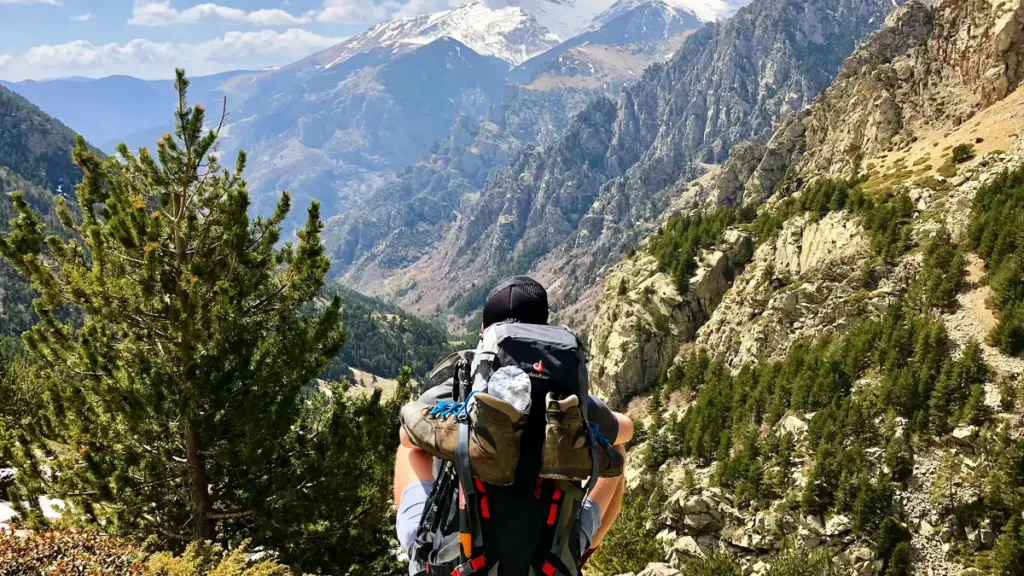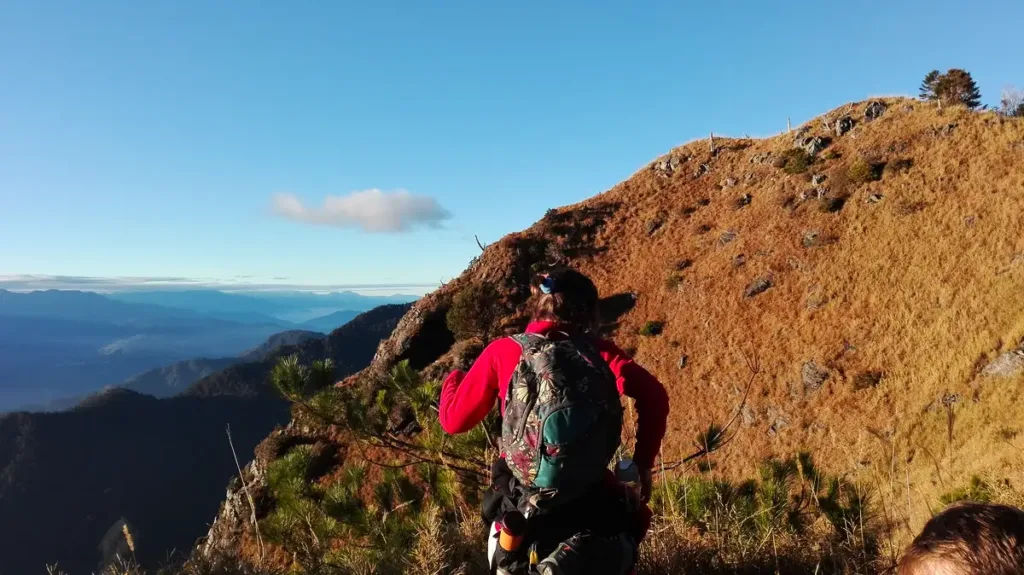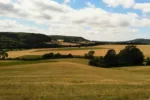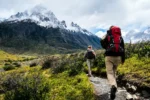What sets trekking apart from hiking?
This post may contain affiliate links. This means that we may receive a small commission from purchases through those links. Read more in our affiliate disclosure.
Hiking and trekking aren’t just different names for the same activity—they represent entirely different philosophies of adventure.
Hiking involves shorter, casual walks on established trails, while trekking is a multi-day, strenuous adventure off the beaten path. Hiking requires basic gear and is beginner-friendly, whereas trekking demands specialized equipment and greater physical preparation. Both activities offer significant health benefits, including improved cardiovascular health, muscle strength, mental well-being, and effective calorie burning. Proper preparation and the right gear are crucial for a safe and enjoyable experience in both pursuits.

What is the Difference Between Hiking and Trekking?
Definition and Duration
Hiking
Hiking is a long, energetic walk in a natural environment on established trails or footpaths, typically done for a day or overnight. Picture this: you and your friends, lacing up boots early in the morning, sipping a steaming cup of joe, and setting off on a beautiful trail in the Porcupine Mountains. Fresh air, crunching leaves underfoot – this is hiking. It can range from several hours to several days and tends to be more casual and beginner-friendly.
Trekking
Trekking involves a long, vigorous hike in a wild natural environment for multiple days, often off hiking trails. Instead of a casual stroll, you’re looking at multi-day adventures covering long distances over several days or even weeks. Typically more strenuous and demanding than a regular hike, trekking is about pushing your limits and soaking in the raw wilderness. When I trekked through the wilderness of the Northern Rockies, it wasn’t just about the destination – the journey itself was a test of endurance and spirit.
Terrain and Difficulty
Hiking
Hiking generally follows well-trodden paths or marked trails, e.g. those in state parks or national forests. While it can vary in difficulty based on factors like elevation gain, distance, and terrain, you’re usually on a clear path. Yes, it can get tricky – but you’ll never need to be a full-on mountain goat to navigate them.
Trekking
A trek takes place off the beaten path and often in remote wilderness areas, like high-altitude regions where acclimatization is crucial. You might also need specialized equipment along the way. It often presents more challenging terrain, rocky paths and those dizzying high altitudes. I still vividly remember the time I trekked the lush trails of Kilimanjaro – it was as demanding as it was breathtakingly beautiful.
Equipment and Preparation
Hiking
For hiking, the essentials include basic gear: sturdy footwear, a daypack with must-haves such as water, snacks, and a first aid kit, and maybe trekking poles. For longer hikes, you might need additional gear: shelter, bedding, and multi-use clothing.
Trekking
Trekking necessitates specialized equipment. This could be tents to brave out weather tantrums, dependable sleeping bags, cooking gear, and a sturdy backpack with ample storage capacity. Expect to carry a heavier backpack, and it’s best to have higher physical fitness and mental preparation. Preparing meals by a flowing river or setting up camp after hours of expedition – it’s as rewarding as it is intensive.
Health Benefits of Hiking and Trekking
Both going on a hike and a trek offer numerous perks for your well-being. Imagine combining the tranquility of the Upper Peninsula woods with a nice calorie burn – a win-win, right?
- Cardiovascular Health: Both activities can improve heart health and help maintain healthy blood pressure levels.
- Muscle Strength & Endurance: Hiking and trekking build killer muscles, endurance, and bone density.
- Mental Boost: Spending time outdoors boosts creativity, Vitamin D levels, and decreases stress and anxiety.
- Weight Management & Toning: Regular participation aids in weight loss, muscle toning, and enhancing core strength.
- Calorie Burn: Hiking can burn between 440 and 550 calories per hour. Trekking, with the increased weight carried, can torch even more calories.

What Gear Do You Need For Hiking vs. Trekking?
Essential Gear for Both Activities
- Good Footwear: Invest in sturdy hiking boots or reliable trail running shoes with ample ankle support.
- Navigation Tools: Keep detailed maps, a trusty compass, and consider a GPS device for longer treks.
Specialized Gear for Trekking
- Tents: Opt for tents suitable for different conditions, such as 3-season tents for milder weather and 4-season tents for more challenging conditions.
- Sleeping Bags: Choose sleeping bags rated for various temperature ranges.
- Cooking Gear: Bring portable stoves, lightweight pots, and essential cutlery.
- Extensive Survival Gear: Multi-tools, first aid kits, and emergency shelters are essential.
Preparation for Beginners
Start Small: Begin with day hikes in local parks or nearby forests.
Join a Community: Gain motivation and companionship from a local hiking community.
Overnight Trial Runs: Tackle an overnight hike with your tent and sleeping bag to test your physical condition and gear setup.

Final Thoughts
When you’re lacing up for a casual hike or gearing up for a rigorous trek, each adventure brings its own unique rewards and challenges. Hiking offers a gentle introduction to nature’s beauty, while trekking pushes you to explore the wilds with greater intensity. Both activities not only enhance your physical health but also rejuvenate your mind and spirit. Embrace the journey, stay prepared, and let the trail lead you to incredible experiences!




